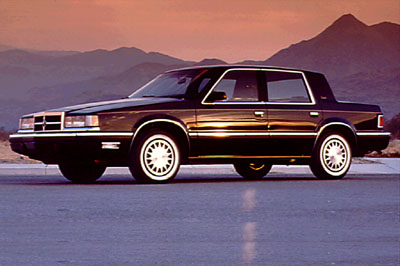
My fascination with mundane automobiles rages on. The most recent target of my lust is the late-model Buick Century, that is, the final series produced from 1997 until 2005. That year range right there has the alarm bells going off already. When a single generation lingers for that long without change you know the car has become a mediocre Hertz-mobile by its final few years. Though in the Century’s case, it was a mediocre Hertz-mobile from the day of conception.
Perhaps it is telling that the Century’s chief exterior designer said at the time of the new model’s release, “We purposely avoided anything that could be considered trendy”, in an effort to keep the styling looking fresh for years to come. Fair enough, the Century doesn’t look quite as dated as some more avant-garde designs from the late-90s, but…. Really? I’ve jested before about car manufacturers setting out from the get go with the intention of creating the most bland design on the market, but, no… they really did set out from the get go to make the most generic car on the market.
And that genericism is of course, why the car appeals to me at all. Leaving any sporting intentions, not to mention interestingness, to its monochromatic-supercharged-bucket-seated twin sister Regal, the Century came with a single engine, a single transmission, and a single seating configuration; 3.1 liter, 4-speed auto, six-passenger split bench. Already sounds like a bucket of thrills, huh? Or shall I say… bench of thrills? (hardy har har).
But the fun doesn’t stop there, oh no. The Century is a Buick of course, and Buick is GM’s premium luxury car division one notch below Cadillac. So then why GM, did you give steel wheels with bolt-on wheel covers to your beloved gem Century? Why did you also give them cloth seats as standard? But most of all GM, why oh why did you make this “premium” Buick sedan come with cruise control as an OPTION?? If I didn’t know better, I’d begin to think that a subcompact Honda Civic was better equipped. Oh wait… it was.

So now we know the Century was hopelessly (and purposely) overlooked in the styling department, and came with “luxury” features and equipment more in line with a Tercel than a Lexus. This poor car must have some redeeming quality mustn’t it? Maybe it has high resale value? Or composed, enviable road manners? No, no, and… hell no.
Given, the Century did have the potential to be a fine handler. It was after all, based on GM’s corporate-wide W-body which underpinned such models as the Oldsmobile Intrigue and “wide-track” Pontiac Grand Prix. Hardly Bimmers, but decent performers in their own right and far from the floaty vague-mobiles that characterized previous mid-size GMs. This competency somehow didn’t transfer over to the Century, whose retiree-tuned suspension and steering left little in the way of composure and stability when pushed much harder than its usual three block trips to the Country Kitchen Buffet. The Century is certainly no boat in terms of actual dimensions, but get behind the wheel and you’d be hard pressed to tell much of a difference between it and some of our favorite 20-foot-long disco-era staples like Electra and Thunderbird. Ok, I exaggerate… but the bottom line is the Century’s suspension was a pathetic excuse for such a modern car, especially when compared to its contemporaries.
So then why do I like the Century? Well, it’s simple, clean, inoffensive, roomy, cushy, comfortable, easy to pilot, and can get me from point A to point B with little fuss. It’s not the sportiest, not the sexiest, and certainly not the most luxurious… but it’s humble and keeps to itself. High production figures and general all-around mediocrity keeps resale values way down, so you can pick one up for a song practically anywhere. Of course there’s always the added benefit that no police officer will ever take a second glance at, let alone pull you over, in a Buick. Maybe it’s not such a bad sedan after all.



